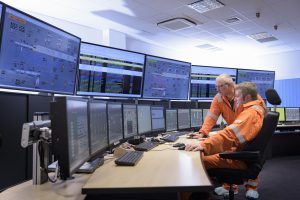Candles, oil, gas and electric lamps; thanks to technology that lets us to enjoy the “Lighting Evolution” over centuries… And today we are using light in our houses and buildings to make our environment smarter and cooler. Lighting is more than lighting of spaces. It’s more about design, comfort and customization. And another subject that reached to 21st century is Lighting Control and Automation.
Today, what made us happy in yesterday is one of the biggest energy consumption items of buildings: Lighting! Lighting represents approximately 30% of a building’s energy consumption. As it get’s more automated, loses will be less and that is critically important in today’s biggest dilemma: Increasing consumption and decreasing energy sources… To protect our planet; LED revolution is also an energy delight in parallel to lighting control systems. In parallel to lighting control, of course energy efficient lamps were also developed to protect our planet.
As LED lamps became the primal lighting source, mostly combination with KNX and DALI open communication protocols, it can also be controlled and integrated to the building management systems. This is the trend for new constructions which approximately took some 90% by value and 80% by number of projects in 2013. Retrofit projects take the balance of 10%. This is despite the fact that new construction in developed countries adds no more than 2 / 3% to the existing floor space each year whilst the potential to exploit the latent market in existing buildings, which is almost two orders of magnitude larger, goes relatively untouched. The market size of LED Lighting and it’s control in retrofits can not be ignored and signs mostly show Wireless technologies for less CAPEX in renovation projects. As energy efficiency becomes mandatory in buildings by regulations, combination of “lighting automation and LED lamps” dramatically decreases lighting application’s energy consumption through 55%.
Main point is to change people’s mindsets and increase their knowledge about lower CO2 emission and alternative technology solutions. As wireless technology providers and their partners business approaches are very important; contractors and installers’ knowledge level about CO2 emission and energy efficiency should be increased by training’s, communication and well identified sales strategies. By this way, potential customers / end users can also be converted to wireless LED control technologies users.
Technology leaders in the market develop their strategies upon how to promote, assist and encourage energy conservation in order to achieve a low carbon economy in the 21st century. LED lighting and its control will be a major beneficiary as governments around the world are banning older, inefficient lighting technologies. By 2014, sales of incandescent bulbs will be restricted in virtually the entire developed world. But unless we can get wireless controls into the retrofit market place building owners will not invest because the ROI for a wired system will not be acceptable for the bulk of the potential demand.
What about tomorrow? How will humanity survive in energy dilemma? I prefer to finalize my speech with Mr.Edison’s approach remarked in an interview; “I don’t like to go into things connected with ancient history, or the dead past, – what I am interested in is the future : in what is going to happen tomorrow.” This is why we all need to look for further steps. Incandescent lamps control with wiring devices for tomorrow? Are you sure?…

